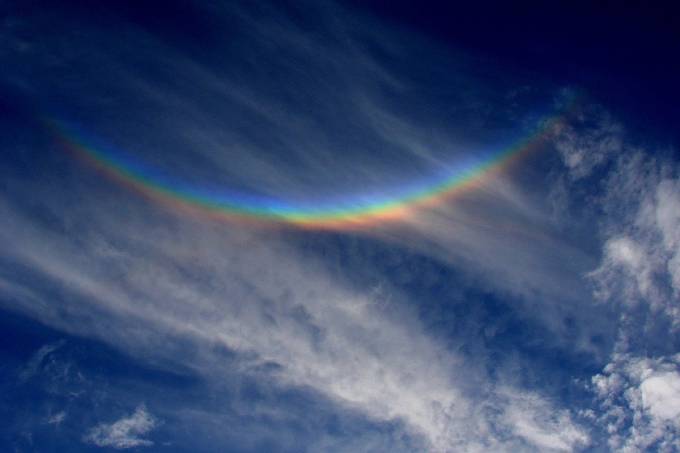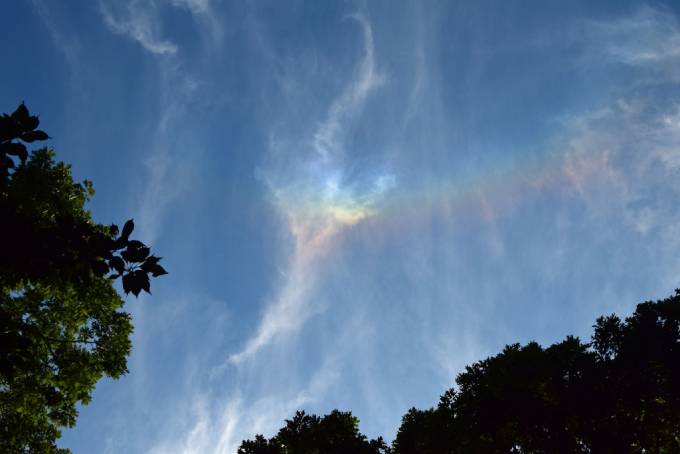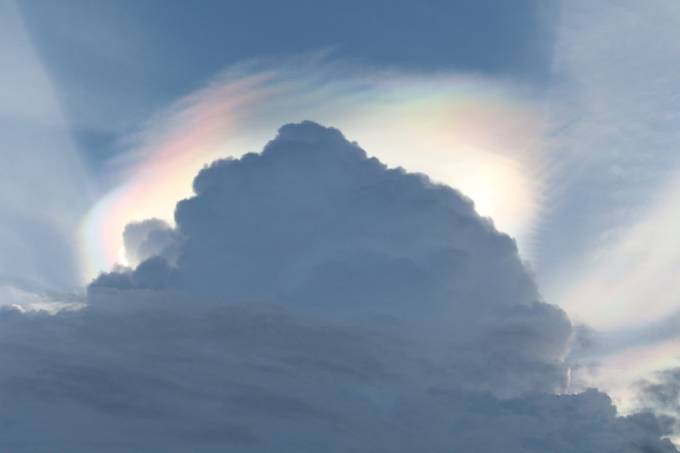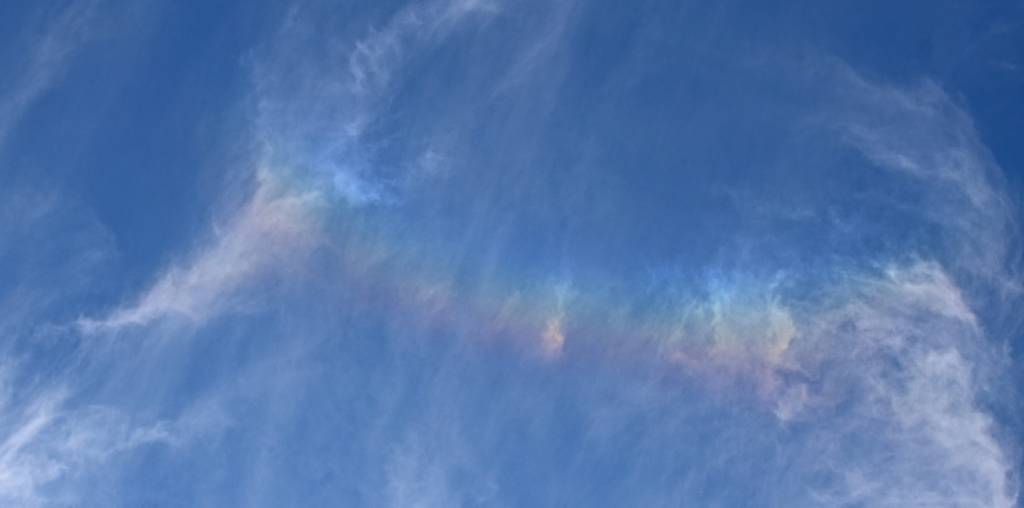The atmospheric optical apparition known as fire rainbows appear as rainbow-colored wisps of clouds in the sky. They belong to the collection of optical phenomena known as “ice halos.” They are distinguishable from other halo effects by the very pure rainbow color bands running parallel to the horizon. While technically termed “circumhorizontal arc” or “circumhorizon arc,” they are believed to have acquired the name “fire rainbow” because of their sometimes flame-like appearance in the sky. In reality, they are neither fire nor rainbows and are relatively rare.

When is an ice halo formed?
Halos form when light passes through ice crystals suspended in the atmosphere and can appear as rings, arcs, or spots. Other more common ice halo phenomena include sun dogs, sun pillars, and 22-degree halos.
Read more: Dark Lightning: A Cosmic Force on Earth
Formation of fire rainbows
Fire rainbows occur when the sun shines through plate shaped ice crystals in cirrus or cirrostratus clouds. These high altitude cirrus clouds are composed entirely of ice crystals and form in the upper troposphere. The clouds cover as much as 30% of the sky and help to regulate the amount of heat radiating off Earth into space. They form in cold air when water freezes into ice at temperatures lower than -4 F (-20 degrees C).
For a fire rainbow to form, the sun must be at least 58 degrees high. Suppose the hexagonal ice crystals in the cirrus clouds are aligned in a particular direction, with their hexagonal sides facing the ground. In that case, the sun shines through the vertical side face, on the thin edge, and is refracted down to the ground, splitting the white light into its component colors. We see the same effect when light passes through a prism at a specific angle.
In contrast to the ice crystals needed to create a fire rainbow, a normal rainbow forms when light passes through water droplets at a specific angle of 42 degrees. Light enters a water droplet and is reflected off the droplet’s inside, separating into its component wavelength colors. Rainbows require water droplets to be floating in the air, which is why we see them right after a storm.
Viewing a fire rainbow
Fire rainbows can only be seen from particular latitudes in certain weather conditions. They cannot be viewed from locations north of 55 degrees N latitude or south of 55 degrees S latitude because the sun never achieves the required 58-degree height in the sky. This means that fire rainbows will never be visible from northern Canada, Alaska, Scandinavia, The Baltics, northern Russia, and the southern tip of South America.

Other Atmospheric Phenomena
Fire rainbows should not be confused with two similar but slightly different phenomena – circumzenithal arcs and iridescent clouds (also called rainbow clouds).
Circumzenithal arcs occur when light enters the giant face of hexagon shaped ice crystals and is refracted and reflected out through the thin edge (the opposite path through the ice crystals compared to fire rainbows).

Iridescent clouds happen when light diffracts through uniformly shaped water droplets in thin clouds. They occur most often in clouds that are very close to the sun, and the colors appear in random configurations, without the clear separating banding of rainbows or fire rainbows.
Read more: Why Are Clouds White?
A rare optical phenomenon
If you happen to see a fire rainbow in your lifetime, be sure to stop and admire its beauty and get a photo if you can. It’s relatively uncommon, so you should consider yourself lucky. If you’d like to contribute to the scientific understanding of this rare phenomenon, then also record the date, time, and duration of the fire rainbow, as well as your geographic location, so that experts can calculate the solar altitude of the sun afterward.


